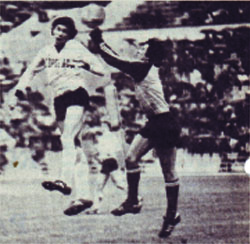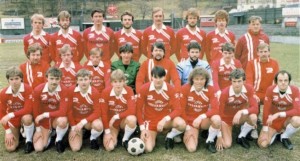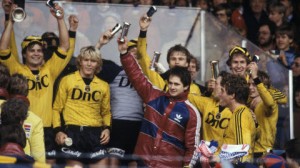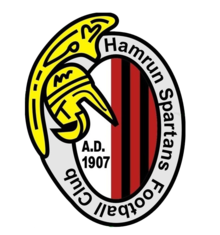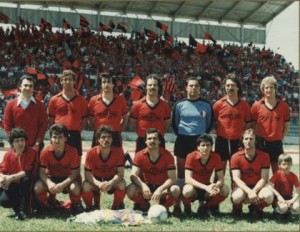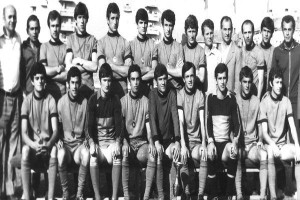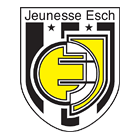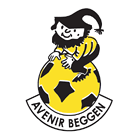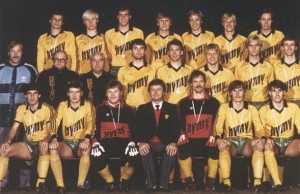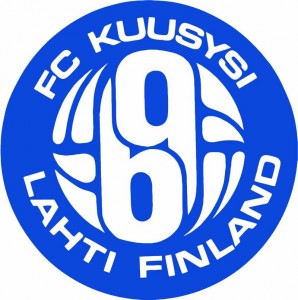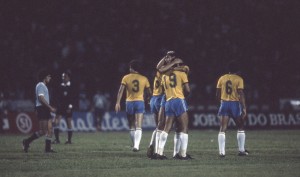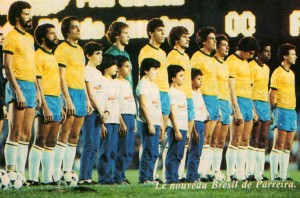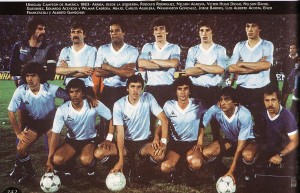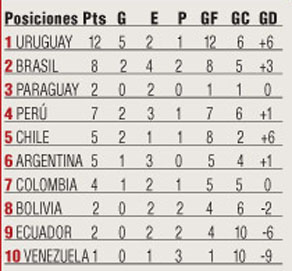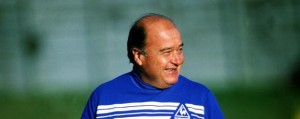Group A. Uruguay, Chile, Venezuela – Uruguay was seemingly the favourite and nothing surprising happened.
1. URU^ 4 6 3 0 1 7-4
2. CHI 4 5 2 1 1 8-2
3. VEN 4 1 0 1 3 1-10
Uruguay:
Eduardo Mario ACEVEDO Defensor
Luis Alberto ACOSTA Wanderers
Julio ACUÑA Defensor
Carlos Alberto AGUILERA Nacional
Nelson AGRESTA Sud América
Antonio ALZAMENDI Nacional
Jorge Walter BARRIOS Wanderers
Miguel Angel BOSSIO Peñarol
Wilmar Rubens CABRERA Nacional
Alfredo DE LOS SANTOS Defensor
Víctor Hugo DIOGO Peñarol
Raúl ESNAL Wanderers
Gustavo Daniel FERNÁNDEZ Peñarol
Juan Eduardo FERRARI Nacional
Enzo FRANCÉSCOLI River Plate (ARG)
Washington GONZÁLEZ Nacional
Nelson Daniel GUTIÉRREZ Peñarol
Roberto Arsenio LUZARDO Nacional
Néstor MONTELONGO Peñarol
Fernando MORENA Peñarol
Juan Francisco MÜHLETHALER Rampla Juniors
Walter Daniel OLIVERA Atlético (Minas Gerais) (BRA)
Víctor Manuel RABUÑAL Bella Vista
Venancio Ariel RAMOS Peñarol
Eliseo Roque RIVERO Danubio
Rodolfo Sergio RODRÍGUEZ Nacional
Alberto Raúl SANTELLI Defensor
Mario Daniel SARALEGUI Peñarol
José Luis SOSA Nacional
Carlos Eduardo VÁZQUEZ Bella Vista
Jorge VILLAZÁN Nacional
Coach: Omar BORRÁS
Chile:
Jorge ARAVENA Universidad Católica
Oscar ARRIAZA Naval Talcahuano
Marco Antonio CORNEZ Palestino
Rodolfo DUBÓ Universidad de Chile
Rubén Alberto ESPINOZA Universidad Católica
Leonel HERRERA Colo Colo
Oscar HERRERA Naval Talcahuano
Alejandro Manuel HISIS Colo Colo
Osvaldo Heriberto HURTADO Universidad Católica
Juan Carlos LETELIER Cobreloa
Juan Carlos ORELLANA O’Higgins
Marcelo PACHECO Naval Talcahuano
Juan ROJAS Colo Colo
Luis ROJAS Unión Española
Roberto Antonio ROJAS Colo Colo
Juan SOTO QUINTANA Naval Talcahuano
René Eduardo VALENZUELA Universidad Católica
Coach: Luis IBARRA
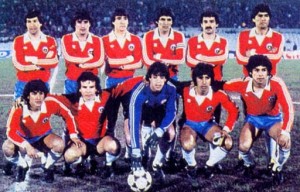
Venezuela:
Pedro Javier ACOSTA Deportivo Portugués
César BAENA ULA Mérida
Braulen BARBOZA Atlético San Cristóbal
Julio Omar BARBOZA Deportivo Táchira
Carlos BETANCOURT Atlético Zamora
Nelson José CARRERO ULA Mérida
Rodolfo CARVAJAL ULA Mérida
Johnny CASTELLANOS Atlético Zamora
Douglas CEDEÑO Mineros
Robert ELLIE ULA Mérida
Pedro Juan FEBLES Atlético San Cristóbal
Ildemaro FERNÁNDEZ Estudiantes (Mérida)
José GAMBOA Deportivo Portugués
José MILILLO Estudiantes (Mérida)
Daniel NIKOLAC Mineros
Carlos PÉREZ Colegio San Agustín
Alberto RAMOS Deportivo Italia
Franco RIZZI Club Italo Venezolano
José RODRÍGUEZ Deportivo Lara
Asdrúbal SÁNCHEZ ULA Mérida
Nicolás SIMONELLI Atlético San Cristóbal
Oscar TORRES Estudiantes (Mérida)
René TORRES ULA Mérida
William URDANETA Deportivo Lara
Vicente VEGA Portuguesa
Coach: José Walter ROQUE (URU)
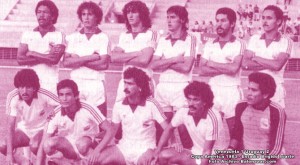
Group 2. The toughest one – Argentina, Brazil, Ecuador. Ecuador was bad news for Argentina – they tied both matches at 2-2. Brazil was unable to prevail over Argentina, losing the away match 0-1 and managing only a scoreless tie at home – 0-0. However, Brazil had no problems against Ecuador and topped the group. But here a mystery exists: according to results, the final table should be
1. Brazil 2 1 1 6-1 5
2. Argentina 1 3 0 5-4 5
3. Ecuador 0 2 2 4-10 2
The official table for some reason is:
1. BRA^ 4 5 3 0 1 6-1
2. ARG 4 5 2 2 0 5-4
3. ECU 4 2 0 2 2 4-10
Brazil:
4. 1 Emerson LEÃO Corinthians
5. 2 José LEANDRO De Souza Ferreira Flamengo
6. 3 MÁRCIO Rossini Santos
7. 4 MOZER – José Carlos Nepomuceno Flamengo
8. 5 Jorge Luis ANDRADE Da Silva Flamengo
9. 6 JÚNIOR – Leovegildo Lins Gama Flamengo
10. 7 RENATO GAÚCHO – R. Portaluppi Grêmio
11. 8 SÓCRATES Brasileiro Sampaio Corinthians
12. 9 ROBERTO DINAMITA – R. Oliveira Vasco Da Gama
13. 10 TITA – Milton Queiroz da Paivão Flamengo
14. 11 JORGINHO – Jorge Campos Palmeiras
15. 12 JOÃO MARCOS Bueno da Silva Palmeiras
16. 13 PAULO ROBERTO Curtis Costa Grêmio
17. 14 TONINHO CARLOS – A. C. Pires Santos
18. 15 WLADIMIR Rodrigues dos Santos Corinthians
19. 16 CHINA – Henrique Valmir Grêmio
20. 17 Carlos RENATO Frederico São Paulo
21. 18 CARECA – Antônio de Oliveira São Paulo
22. 19 ÉDER Aleixo de Assis Atlético (Minas Gerais)
23. 20 LEIZ Antônio Mendes da Cunha Portuguesa
24. 21 JOÃO PAULO de Lima Filho Santos
25. 22 ACÁCIO Cordeiro Barreto Vasco da Gama
26. 23 GERALDO Pereira Botafogo (Río de Janeiro)
27. 24 Milton da Cunha MENDONÇA Portuguesa
28. 25 DOUGLAS Huminia Menezes Cruzeiro
Coach: Carlos Alberto PARREIRA
Argentna:
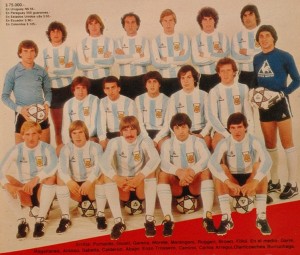
José Luis BROWN Atlético Nacional (COL)
Juan Carlos BUJEDO Vélez Sarsfield
Jorge Luis BURRUCHAGA Independiente
Julián CAMINO Estudiantes (La Plata)
Néstor Rolando CLAUSEN Independiente
Ubaldo Matildo FILLOL Argentinos Juniors
Ricardo Alberto GARECA Boca Juniors
Oscar Alfredo GARRÉ Ferro Carril Oeste
Ricardo Omar GIUSTI Independiente
Ruben Darío INSÚA San Lorenzo
Omar Roberto JORGE Vélez Sarsfield
Claudio Oscar MARANGONI Independiente
Roberto MOUZO Boca Juniors
Alberto José MÁRCICO Ferro Carril Oeste
Julio Jorge OLARTICOECHEA River Plate
José Daniel PONCE Estudiantes (La Plata)
Nery Alberto PUMPIDO Vélez Sarsfield
Víctor Hugo RAMOS Newell’s Old Boys
Jorge Roberto RINALDI San Lorenzo
Miguel Angel RUSSO Estudiantes (La Plata)
Alejandro SABELLA Estudiantes (La Plata)
Enzo Héctor TROSSERO Independiente
Coach: Carlos Salvador BILARDO
Ecuador:
Wilson Antonio ARMAS El Nacional
Freddy Egberto BRAVO
Gabriel CANTOS LDU Portoviejo
Paul “Polo” Fernando CARRERA Deportivo Quito
Hamilton Emilio CUVI 9 de Octubre
Carlos Kiko DELGADO El Nacional
Alfredo ENCALADA Deportivo Quito
Carlos GOROSABEL LDU Quito
Luis Augusto GRANDA El Nacional
Orly KLINGER LDU Quito
Hans MALDONADO El Nacional
José Vicente MORENO LDU Quito
Luis Orlando NARVÁEZ El Nacional
Pedro Marcelo PROAÑO
Tulio Tayron QUINTEROS Barcelona
Lupo Cenén QUIÑÓNEZ Manta
Israel RODRÍGUEZ Emelec
Milton RODRÍGUEZ
Bolívar RUIZ LDU Quito
Carlos René RON
Jorge Vinicio RON Universidad Católica
Mario TENORIO Barcelona
Galo Fidean VÁSQUEZ Barcelona
José Jacinto VEGA El Nacional
José VILLAFUERTE El Nacional
Coach: Ernesto GUERRA
Group 3. Bolivia, Colombia, Peru. Peru was the likeliest winner and it was:
1. PER^ 4 6 2 2 0 6-4
2. COL 4 4 1 2 1 5-5
3. BOL 4 2 0 2 2 4-6
Peru:
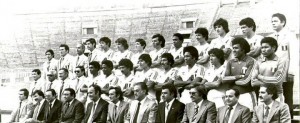 Top row, from left: Pedro Requena, Pedro Bonelli, Julio Zorrilla, Jorge Ramírez, Eduardo Rey Muñoz, Luis Reyna, Franco Navarro, Rubén Díaz.
Top row, from left: Pedro Requena, Pedro Bonelli, Julio Zorrilla, Jorge Ramírez, Eduardo Rey Muñoz, Luis Reyna, Franco Navarro, Rubén Díaz.
Middle row: José Casanova, Alberto Castillo, Genaro Neyra, Juan Caballero, José Aguayo, José Velásquez, Eduardo Malásquez, José Gonzáles Ganoza, Oscar Bravo.
First row: technical personal, officials, coaches.
Eusebio Alfredo ACASUZO Universitario
Jorge AGUAYO Melgar
Pedro BONELLI Deportivo Municipal
Juan CABALLERO Sporting Cristal
José CASANOVA Alianza Lima
Rubén Toribio DÍAZ Sporting Cristal
Jaime Eduardo DUARTE Alianza Lima
Raúl GARCÍA Universitario
Germán Carlos LEGUÍA Universitario
Eduardo Hugo MALÁSQUEZ Deportivo Municipal
Alberto MORA Sporting Cristal
Eduardo Rey MUÑOZ Universitario
Pedro Franco Enrique NAVARRO Deportivo Municipal
Genaro NEYRA Melgar
Jorge Andrés OLAECHEA
Jorge RAMÍREZ Melgar
Pedro Jesús REQUENA Sport Boys
Luis Alberto REYNA Sporting Cristal
Roberto ROJAS Alianza Lima
José Manuel VELÁSQUEZ Alianza Lima
Coach: Juan José TAN
Colombia:
Jesús Alberto BARRIOS Atlético Júnior
Pedro Manuel BLANCO Atlético Junior
Oscar Emilio BOLAÑO Atlético Júnior
Juan Edgardo CAICEDO América (Cali)
Anthony William DE AVILA América (Cali)
José Ernesto DÍAZ Millonarios
Alvaro Diego ESCOBAR Independiente Medellin
Víctor Hugo ESPINOSA América (Cali)
Fernando FIORILLO Atlético Júnior
Hernán Darío HERRERA Atlético Nacional
Carlos Mario HOYOS Deportivo Cali
Arnoldo Alberto IGUARÁN Millonarios
Víctor Emilio LUNA Atlético Nacional
Nolberto MOLINA Millonarios
José James MINA Independiente Santa Fé
Willington José ORTIZ América (Cali)
Norberto José PELUFFO Millonarios
Miguel Augusto PRINCE Millonarios
Pedro Enrique SARMIENTO Atlético Nacional
Henry Roberto VIÁFARA Deportivo Pereira
Alex “Didí” VALDERRAMA Unión Magdalena
Coach: Efraín SÁNCHEZ
Bolivia:
 Top row, from left: W. Camacho, técnico, F. Salinas, D. Paniagua, R Perez, Terrazas, Castillo, J. Peña, Hoyos, R. Coímbra.
Top row, from left: W. Camacho, técnico, F. Salinas, D. Paniagua, R Perez, Terrazas, Castillo, J. Peña, Hoyos, R. Coímbra.
Middle row: O. Mezza, Camacho, Revollo, S. Rojas, J. Villarroel, R. Vargas, Urizar, M. Aguilar.
Front row: J. Reynaldo, E. Romero, Zambrana, C. Borja, M. Melgar, Arias, Vaca.
Miguel AGUILAR Oriente Petrolero
Carlos ARIAS Bolívar
Carlos Fernando BORJA Bolívar
Jorge CAMACHO Petrolero (Cochabamba)
Edgar CASTILLO Blooming
Rolando COIMBRA Guabirá
José Milton MELGAR Blooming
Ovidio Donacio MEZZA The Strongest
David Augusto PANIAGUA Blooming
Roberto PÉREZ Guabirá
Silvio Edmundo ROJAS Blooming
Erwin ROMERO Bolívar
Fernando SALINAS Bolívar
Eduardo TERRAZAS Blooming
Carlos URIZAR Bolívar
Edgar VACA Guabirá
Ramiro VARGAS Bolívar
Johnny VILLAROEL Jorge Wilstermann
Coach: Wilfredo CAMACHO
 Their 35th title after 15 wins, 5 ties and only 2 matches lost. 43-13 was their scoring record – very impressive defensively. The nearest opponent was 5 points behind.
Their 35th title after 15 wins, 5 ties and only 2 matches lost. 43-13 was their scoring record – very impressive defensively. The nearest opponent was 5 points behind.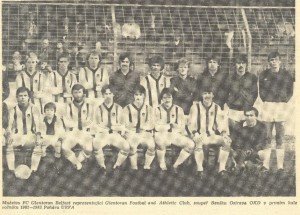 The season ended very well for Glentoran – they were no match to Linfield in the long run, but managed to clinch the Cup, which was more than fine: it was their 10th and the first since 1972-73.
The season ended very well for Glentoran – they were no match to Linfield in the long run, but managed to clinch the Cup, which was more than fine: it was their 10th and the first since 1972-73.